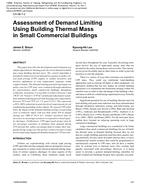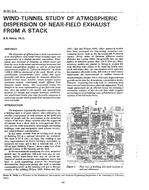Physics-based computer models use typical meteorological year (TMY) weather files or actual weather data (AWD) for a specific location to predict the building energy performance. TMY files are based on the long-term measurements of weather data. On the other hand, AWD, which is obtained from direct measurements for a specific period, might result in a different energy simulation outcome. Moreover, most of the building systems, such as heating and cooling systems, which are optimized by model predictive control (MPC) methods, work based on weather data. Therefore, it is vital to understand and quantify the impact of weather data on the accuracy of predictive models. This paper differentiates the impact of TMY and AWD in building energy simulation in data-driven models (DDMs) as opposed to physics-based models to study the importance of weather data in DDMs.
This research study uses real-time aggregated data with a 15-minute interval collected from residential buildings in Austin, Texas. Generalized Linear Model, Deep Learning, Decision Tree, Random Forest, and Gradient Boosted Trees models are exploited to predict the energy use based on available features in TMY and AWD, where the latter is obtained from an open-access database that includes about 11 types of weather data such as temperature, humidity, wind speed, and atmospheric pressure. Extensive sensitivity analysis is performed to tune the parameters of the proposed DDMs. The models’ outputs are compared for both TMY, and AWD based on the root-mean-square error (RMSE) of each model. These outputs quantify the impact of weather data on the accuracy of DDMs predictions for building energy use, which contribute to the performance of MPC systems in buildings to maximize energy saving.
Citation: 2020 Virtual Conference Papers
Product Details
- Published:
- 2020
- Number of Pages:
- 8
- Units of Measure:
- Dual
- File Size:
- 1 file , 2.5 MB
- Product Code(s):
- D-VC-20-C008


